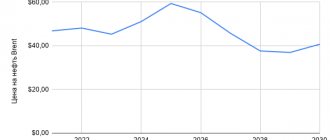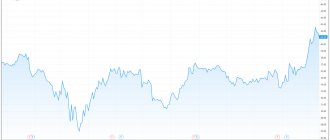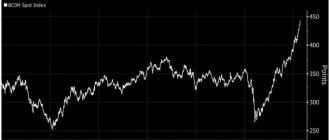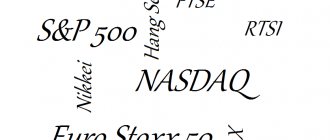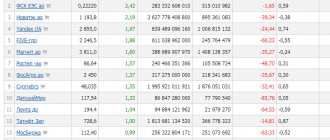Interested in China's stock markets today? Would you like to receive useful information? Do you want to know about the largest companies in China? Or buy shares? Here you will find the answers.
China's stock markets occupy an important place today. It is worth noting that this applies not only to the country’s industry, but also to its shares and bonds. In turn, the state of the Chinese stock market is influenced by many internal factors. In addition, in recent months, such a factor as the epidemiological situation in the world has appeared. China's stock markets are specific. In them, most of the shares are owned by private investors and state-owned companies. On the other hand, the controlling stakes in each enterprise belong to the state.
China stock markets today
Chinese stock markets today and their history
Despite the country's centuries-old history, the Chinese stock market began to emerge only at the beginning of the 20th century. Up to this point, there have been many upheavals, coups and wars in China. Accordingly, this led to economic instability. Therefore, in such conditions it was impossible to even talk about the emergence of a stock economy.
The prerequisite for the formation of the exchange was the Opium War, which was lost by China in 1842. In accordance with the Treaty of Nanjing, foreigners had the right to actively intervene in the country's economy. This led to the formation of the stock market in the 1860s. A few years later, an association of stockbrokers was founded in Shanghai.
The founders were businessmen from England, the USA, and France. Before this, trading in securities was carried out, but spontaneously, without centralized control. In 1895, China lost another war, the Sino-Japanese War.
On the other hand, this has opened up additional opportunities for foreign funds to penetrate the Chinese economy. Enterprises and companies owned by Japanese and Europeans opened in the country. After 1985, foreign investors regained access to the Shanghai market.
Help: Do you need high-quality translation of financial documents from Chinese? We will help you. WhatsApp: +79500911531 Email
Risks of investing in the Chinese economy
For those who decide to purchase shares of Chinese companies, it would be useful to learn about the existing risks. Although China's economy looks attractive, there are some issues that could have a negative impact on investment. These include:
- Difference in reporting standards.
- Risks of currency fluctuations.
- The influence of the CCP on economics and politics.
- Risks of fraud.
The risks include the fact that short sellers appear much more often on the Chinese market compared to American stock exchanges. A year ago, the risks included a trade conflict with the United States and a slowdown in the Chinese economy.
The first issue is gradually being removed from the agenda, as the United States and China are gradually closing all points of disagreement. However, the second point remains relevant today. Moreover, with the emergence of the new coronavirus, many experts predict a further slowdown in China's growth by up to 5% per year.
Shanghai Composite weekly chart (clickable)
A look at the weekly chart of the Shanghai Composite, an index that tracks all stocks traded on the Shanghai Stock Exchange, reveals all of investors' concerns for 2021. During 2021 there was a pulse of growth, which then stopped. And since the beginning of 2020, there has been a gap in quotes (the so-called price gap) associated with concerns about the coronavirus.
The trade conflict between the United States and China has made a negative contribution to the development of the Chinese economy. In particular, many United States enterprises were forced to move their production facilities to other countries, such as Vietnam, India or Mexico. If the US and China had not found common ground, the market would have continued to win back the decline
Among the risks, we also indicated the influence of the Chinese Communist Party on the economy. Don't forget the cases with the famous software developer Momo. In 2021, its Tantan (online dating) service was removed from all app stores, and the company was forced to curtail its social network development activities.
There are also risks of fraud. Of course, today they are much lower than just a few years ago. However, such cases do occur. It is important for investors to be aware that Chinese companies are subject to different financial reporting requirements, which allows some companies to manipulate the price of their shares. As a result, such companies often become victims of attacks by short sellers. A similar incident occurred at Unix, a used car company.
China's stock markets today: origins 1900-1949
The first stock exchange was established in Shanghai. It began operating in 1904, but the official opening took place only in 1920. Later, sites opened in Tianjin and Beijing. Government bonds made up the majority of the turnover, the share of private capital was extremely small. The Shanghai Stock Exchange was the largest in Asia. Later it was integrated with the New York one.
But at the beginning of World War II, the Shanghai site was closed for the entire period of the occupation of China by Japan. After the war, the exchange resumed operations, but after the 1949 revolution, the Communist Party came to power, and its leadership stopped the work of all exchanges - the first stage of the history of the Chinese stock market was short. The closure of the sites was politically justified, but the country's economy suffered as a result. Hunger and total poverty of the inhabitants became a natural consequence of the revolution.
Alexander Bakshtanovsky
Professional Chinese translator (2013-2021) Learning Chinese from scratch. Founder of the ichinese8.ru project My specialization: 1) translation of technical documents; 2) translation of legal documents; 3) website translation and localization; 4) translation of financial documents; 5) translation of marketing materials.
Ask a Question
Question to the expert
When did stock exchanges begin to open again in China?
After the launch of economic reforms 改革开放 ("reform and opening up policy") in 1978. Reformer Deng Xiaoping 邓小平 took consistent measures for the economic development of the country. The Chairman of the CPC noted that the most important priority is to build a “socialist market economy.” Ideological dogmatism (which, together with the lack of political will among the national elite to develop the country, led to the collapse of the USSR) began to play a minor role in China. This is precisely what led to colossal changes in the Chinese economy.
Deng Xiaoping's catchphrase about capitalism and socialism
“It doesn’t matter what color the cat is - white or black, as long as it is good at catching mice.” “不管白猫黑猫,捉到老鼠就是好猫”
Deng Xiaoping 邓小平
Deng Xiaoping
After the start of reforms, Tianqiao Department Store Co. became one of the first joint-stock companies. Ltd. After him, other companies appeared, and by 1989 there were already thousands of them. But the prices for their shares were fixed by the state, and the securities themselves were not the property of citizens - they only received dividends on them. It was impossible to sell papers; the ban naturally provoked “street trading.”
Where else to buy Chinese shares
You can also buy shares on the over-the-counter market. These will be so-called pink stocks. The problem is that it is difficult to get more or less serious statistics on them.
There are also several options for Russian shareholders. Let us immediately note that it will not be possible to buy Chinese securities using an individual investment account, since domestic brokers do not provide access to foreign platforms through an individual investment account. However, there are a number of ways that will allow you to invest in shares of Chinese companies even without registering on their exchanges.
The simplest of them is buying shares of the FXCN fund. It is traded on the Moscow Exchange. Moreover, the option of working through a regular brokerage account or IIS is possible. This index is based on Solactive GBS China ex A-Shares Large&Mid Cap USD. It includes shares of 18 companies. In terms of expense ratio, it is 0.9%.
In addition to this option, you can consider securities of individual Chinese companies through depositary receipts. This applies to Alibaba or Baidu. In addition, there are plans to add a number of other companies to the exchanges
Russian investors can also open accounts with other brokers located abroad and through them buy shares of Chinese companies. In addition, there will be access to a larger number of exchange-traded funds. True, this option is the most difficult.
The fact is that not all brokers provide access to accounts for Russian investors. Tax deductions do not apply here, and fees can be significantly higher. You will have to calculate and pay personal income tax yourself.
You can also buy shares of Chinese companies through the over-the-counter market. For example, purchasing the FXI Chinese large company stock fund or the CQQQ technology fund. However, these ETFs are intended only for qualified investors and cannot be purchased through individual investment accounts.
China's stock markets today: reforms 1978-1990
Finally, in 1990, the revival of the stock exchange in China began. Clandestine stock trading flourished, and it was impossible to overcome it by any means. And the PRC government acted wisely: if you can’t win, lead (control). The government allowed the opening of the Shanghai Stock Exchange. From that moment on, China became the second country in the world with a socialist system to have its own stock market. The first such country was Hungary.
China's stock exchanges: development in 1991-2000
In 1990, a Shanghai site was opened, and in 1991, another one was opened in Shenzhen. At that time, Shenzhen was the most economically developed territory in China. In Shanghai, most shares were held by former large state-owned enterprises. They were reorganized into joint stock companies. The Shenzhen Exchange sold securities not only of companies controlled by the state, but also of joint ventures cooperating with Hong Kong. But the main indicators of the two sites were similar, and they developed at the same fast pace.
Information:上海证券交易所 – Shanghai Stock Exchange 深圳证券交易所 – Shenzhen Stock Exchange These two exchanges are the main ones in China.
China stock markets today_Shanghai Stock Exchange
Help: Do you need high-quality translation of financial documents from Chinese? We will help you. WhatsApp: +79500911531 Email
To control this segment of the economy, the State Committee of the People's Republic of China for Regulation of the Securities Market (中国证券监督管理委员会) was created in 1992. To list, each company must:
- The last 3 years have brought stable profits.
- Capitalization – from 30 million yuan (三千万人民币)
- With a capital of more than 400 million yuan (四亿人民币), at least 15% of it must be placed on the stock exchange.
- The company must have at least 1 thousand shareholders (不少于一千名股东)
Fear of uncertainty
Until now, the mining industry has been less regulated compared to other cryptocurrency sectors, says Vadim Krutov, CEO of the blockchain company Bitfury Russia. According to him, the size of the industry has grown significantly in recent years, which is forcing regulators to pay more attention.
“More than half of the world’s mining capacity is concentrated in China, so the increasing attention of the regulator is not unexpected,” the expert noted.
Most likely, miners are afraid not of regulation itself, but of uncertainty, since market players often do not know what to expect from the regulator, says Vadim Krutov. He notes that the wary attitude of the Chinese authorities towards this industry is forcing miners to move to more predictable jurisdictions.
China's stock markets today: rapid development in the 21st century
In the 21st century, China developed rapidly; it became a leader in economic growth, achieving phenomenal indicators. This growth was facilitated by:
- State support for innovation activities.
- Effective innovation policy.
- Help for high-tech businesses.
- Development of science.
- Transfer of production from Western countries to China.
- Import of technologies.
- Large domestic market.
- The largest human resources of any country.
- Great resources in scientific and technical fields.
- Active export of goods to the countries of Asia, Europe, and the USA.
In 2004, exports of high-tech goods exceeded imports. Then, after joining the WTO, the rate of production of such products exceeded the annual average several times. The active development of enterprises and the economy as a whole also influenced stock exchanges. But their work was not effective enough until the next reforms.
Reforms: China's stock market in the 2010s
For the further development of the PRC stock market, it needed its liberalization. This was the aim of the reforms, which were carried out in accordance with the position of the IMF. China's liberalization strategy was characterized by:
- Gradually.
- Asymmetrical.
- Sequence (foreign direct investment was liberalized immediately, followed by portfolio flows, the influx of funds was ensured until the export of capital from China was allowed).
- Use of quotas - restrictions on the size of flows have been introduced.
- Focus on individual investment groups.
The result of the reforms was the permission for qualified foreign investors to invest in bonds through a quota system, in the interbank and foreign exchange markets. Since 2011, foreign investors have been able to use their existing yuan to invest in the domestic securities market. Unrestricted access of Chinese securities to the interbank market was also provided for sovereign wealth funds and central banks.
Information from ichinese8.ru: In 2021, the yuan was included in the basket of special drawing rights currencies, which increased the interest of foreign investors. And since April 2021, government bonds and bonds of “political” banks are already included in the Bloomberg Barclays global index.
Features of investing
In general, investing in foreign stocks does not always go smoothly. There are certain risks, including currency risks, which can lead to loss of part of the profit or even losses.
Other risks include:
- Regulation. It is different in different countries. Therefore, before you start investing in the Chinese stock market, you should carefully read the rules and regulations. Although China strives to make investments in its economy as accessible and transparent as possible. After all, Beijing is vitally interested in the influx of foreign funds.
- Transparency. This is another important problem, characteristic mainly of emerging markets.
- Volatility. Everything is more or less clear here. The higher the liquidity, the lower the volatility. In emerging markets, it can be quite high for a number of reasons, including due to certain investor concerns.
- Various regional features. This may include corruption, war, natural disasters. We would add concerns regarding the possibility of the emergence of various diseases. Corruption in China is at a very low level. How corrupt officials are dealt with in the Celestial Empire has long been known and everything is known. Wars and natural disasters do not pose any particular risks for this country. But the emergence of various diseases deserves attention.
The fact is that at the beginning of 2021, a new coronavirus epidemic broke out in China, which has already affected local stock prices and had a serious impact on countries that are most closely associated with Beijing (Australia, for example). And if this were an isolated incident, probably no one would pay serious attention to it. However, this is the second time in the 20 years of the new century. And this is especially alarming for investors.
As practice has shown, and taking into account unprecedented measures, China can cope with such challenges. So if you want to invest in companies in this country, let's take a look at how to do it.
The first option for international investors is American Depositary Receipts. These are derivative securities with free circulation on US stock exchanges for shares of foreign companies. With the help of such tools, any foreign company can gain access to listing on any US exchange.
The second option is to purchase shares through exchange-traded funds. Some ETFs hold a selection of stocks and trade like those securities.
These ETFs include:
- iShares MSCI China ETF. This exchange-traded fund tracks the MSCI index. $4.3 billion in assets under management. The expense ratio is 0.59%. The average annual return over the past five years is 6.95%.
- S&P SPDR China ETF. Tracks the S&P China BMI Index. 1.25 billion in assets under management. The expense ratio is 0.59%. The average annual return over the last 5 years is 7.09%.
- iShares China Large Cap ETF. Tracks the FTSE China 50 Index. US$5.53 billion in assets under management. Expense ratio 0.74%. The average return over the last 5 years is 5.52%.
Let's take a closer look at each of these funds:
- iShares MSCI China ETF
This fund's investment strategy is to track the MSCI China Index.
This index reflects the dynamics of securities of companies from the Middle Kingdom with medium and large capitalization. Covers approximately 85% of investments in the economy of this country. The purpose of calculating this index is to provide detailed information on investment opportunities, taking into account liquidity, attractiveness and reproducibility. The values are recalculated every trimester. There are also semi-annual reviews, during which the index is rebalanced.
The minimum investment in an ETF is $50,000. The fund's place of registration is Ireland. The fund was launched in March 2011. More detailed information on the fund, including financial statistics, can be found here:.
- S&P SPDR China ETF
This fund tracks the overall returns of the Chinese stock market. Uses a passive management strategy to track the total return of the Citigroup BMI China Index.
This stock index was developed by CitiGroup Bank and is supported by the famous rating agency S&P. Allows you to assess the state of the investment market for companies located in China, but available for international investment.
The fund includes the following shares:
- iShares China Large Cap ETF
The investment objective of this fund is to track the investment performance of an index based on large capitalization companies traded on the Hong Kong Stock Exchange. More information on the fund can be found here:
Recommended reading: How stock markets work
Features of buying ETFs
Now let’s look at step-by-step instructions for purchasing ETFs in Russia. To do this you need to do the following:
- Choose a broker and open an account.
- Download and install the trading terminal (required by some companies).
- Purchase your desired ETF.
As you can see, there is nothing complicated about this. ETFs for Chinese stocks can be purchased through the Moscow Exchange. There are no significant restrictions. However, some government officials who are prohibited from using foreign financial instruments will not be able to buy such exchange-traded funds.
In Russia, the most popular is the FinEX exchange-traded fund, which offers shares of various countries. For example, for China it is FXCN. Benefits include:
- transparency, simplicity and efficiency of the financial instrument;
- low entry threshold, possibility of diversification;
- low cost (the price of exchange-traded funds varies on average from 600 to 7,500 rubles per share);
- there is no need to go through the qualification procedure (shares are available to unqualified investors);
- the ability to conduct transactions in different currencies (depending on the broker);
- trades on the same principles as shares. Liquidity is provided by the market maker;
- assets are held by custodian Bank of NY;
- low overall level of expenses (0.9%);
- the fund's return over three years is 38.86%;
- distribution of shares within the FXCN fund (table below).
Also, ETF CQQQ and iShares are available to participants of the St. Petersburg Exchange. The CQQQ Invesco China Technology ETF is an exchange-traded fund that provides investors with exposure to technology stocks. It includes class A shares (listed on Chinese exchanges), class H shares (listed in New York), as well as securities of other classes. The fund tracks the AlphaShares China Tech Index and the FTSE China Incl A 25% Tech Capped Index. The first is designed to assess the investment performance of investments in technology companies in China, Hong Kong and Macau. The second is designed to assess the performance of China's technology sector.
The fund includes:
Largest companies in China
China is striving to take a leading position on the world stage in many areas. To understand the development trends of the state and business in it, it is worth familiarizing yourself with the TOP 30 largest companies in China in 2021.
China's largest companies: top five
Sinopec Group
Sinopec company
One of the largest state-owned companies. Field of activity: petrochemistry and oil refining. The corporation was founded in 1983, but was reorganized 15 years later. Sinopec is now state owned. It is the largest enterprise in China.
State Grid Corporation of China
State Grid Company
Electric grid company recognized as the largest in the world in this industry. Provides jobs for more than 900 thousand people. Consists of 5 subsidiaries. Founded in 2002, owned by the state. Field of activity: construction and operation of electrical networks not only in China, but also abroad.
China National Petroleum Corporation (CNPC)
China Petroleum Company
The largest oil and gas company in China (fourth place among all companies in the world). Refers to state-owned enterprises. The official founding date is 1988, but the prerequisites for its creation appeared back in 1950. Gazprom, Rosneft and Transneft cooperate with CNPC.
China State Construction Engineering Corporation (CSCEC)
China Construction Co.
Construction company, one of the 20 largest contractors in the world. The company was founded in 1957. Field of activity: construction of not only residential and industrial buildings, infrastructure facilities, but also investment and property management.
Ping An Insurance
Ping An Insurance Company
A group of companies engaged in insurance. It operates in four main types of activities: life insurance, property insurance, investment and banking services. A public company, was founded in 1988. Now the company has offices not only in China, but also in the USA.
Help: Do you need high-quality translation of financial documents from Chinese? Or an overview of the development of the Chinese stock market in Russian? Information on Chinese companies participating in listing on the stock exchange? Up-to-date information on your Chinese counterparty? We will help you!
WhatsApp: +79500911531 Email
Largest companies in China: 6-10 places
Industrial and Commercial Bank of China
Industrial and Commercial Bank of China
The largest commercial bank, one of the “Big Four” state-owned banks in China. The bank was founded in 1984 and transformed into a joint-stock company in 2005. It provides not only services to private and corporate clients, but also provides treasury services. In addition to China, it has its organizations in 45 more countries.
China Construction Bank
China Construction Bank company
Chinese construction bank, also one of the Big Four. It was founded in 1954 and until 2004 was subordinate to the Ministry of Finance, and since 2004 it has become a joint-stock bank. It provides services not only in China, but also abroad - with its own branches in 10 cities in different countries, and in many foreign countries through subsidiary banks, including in Russia. The main areas of work are lending, investing, insurance.
The Agricultural Bank of China
Agricultural Bank Company
Agricultural Bank of China, the third of the Big Four. It was founded in 1951 and became the very first commercial bank. The bank has branches not only in China, but also abroad, and also has 4 representative offices and 14 subsidiaries around the world.
Bank of China Ltd 中国银行
China's stock markets today_ Bank of China company
The oldest Bank of China, founded in 1912. The last bank from the "Big Four". The main areas of activity are commercial banking (private and corporate clients, as well as treasury operations), investment banking and insurance. Plastic cards are also accepted. In addition to China itself, Bank of China can be found in 53 other countries.
China Life Insurance Company
China's stock markets today_ China Life Insurance Company
A public insurance company founded in 1949. Key areas of activity are life insurance, medical insurance, accident insurance and other insurance services provided to partners.
The largest companies in China: 11-15 places
Huawei Technologies Co. Ltd. 华为技术有限公司
China's stock markets today_ Huawei
One of the largest private telecommunications companies in the world. In Russia it is better known for its mobile devices and its own network service, however, in China it is also the largest supplier of wireless networks and equipment.
China Railway Engineering Group
China's stock markets today_ China Railway Engineering company
Chinese railway construction company. The prerequisites for its creation appeared back in 1950-1958, but the official date of appearance was in 1990. The most famous projects were carried out in Jordan (subway construction) and Cambodia (high-speed railway).
SAIC Motor Corporation
SAIC Motor Company
Automotive company founded in 1997. It accounts for a quarter of all cars purchased in China, as well as a significant share of exported vehicles, including passenger, cargo, sports and multi-purpose cars, SUVs and buses. We have already talked about this company in the article “Names of Chinese cars in Russian.”
China Railway Construction Corporation (CRCC)
China Railway Construction Company
Another largest construction company in China. The company was founded in 1948. Field of activity: transport infrastructure, logistics and residential real estate. The company's activities also include equipment manufacturing, exploration, design and consulting. In addition to performing work in China, CRCC also carries out foreign contracts in Africa.
China National Offshore Oil Corporation
China's stock markets today_ China Offshore Oil Company
Another oil company, the third largest in China. Field of activity: production, processing and marketing of not only oil, but also natural gas. A state-owned monopoly company in the field of offshore mineral extraction.
The largest companies in China: 16-20 places
China Mobile Limited
China's stock markets today_ China Mobile Company
A telecommunications company providing communication services. It can rightfully be considered one of the largest cellular operators in the world (in terms of the number of subscribers). Serves the whole of China, providing not only mobile communication services, but also broadband Internet.
Pacific Construction Group
Chinese stock markets today_ Pacific Construction Company
In 17th place is a large construction company specializing in infrastructure projects - roads, bridges, ports and industrial facilities.
China Communications Construction Company 中国交通建设集团有限公司
China's stock markets today_ China Communications Company
A state-owned corporation whose core business is the construction of transport infrastructure. The company is represented in 139 countries, but most of the contracts are carried out in China. Has 30 subsidiaries.
China Resources (Holdings) Company Ltd. 华润(集团)有限公司
Chinese stock markets today_ China Resources company
A diversified conglomerate, including:
- a supermarket chain and the largest Chinese brewing company;
- energy and coal assets in 12 provinces of China;
- real estate developer and operator with assets in 14 cities;
- cement and concrete manufacturing company;
- gas distributor in large cities;
- ethanol producing company;
- Chinese Arts&Crafts chain of stores;
- monopoly importer of meat to Hong Kong.
First Automobile Works
China's stock markets today_ FAW Company
The oldest automobile manufacturing company in China, it is a state-owned corporation. FAW independently produces 6 main categories of vehicles: SUVs, buses, passenger cars and compact cars, as well as light, medium and heavy-duty trucks. There are joint ventures with Ford, Mazda, Volkswagen, Toyota, as well as with a number of Russian companies. We also wrote about this company in the article “Names of Chinese cars in Russian.”
The largest companies in China: 21-25 places
China Post Group 中国邮政集团有限公司
China's stock markets today_ China Post Company
China's national postal service, founded in 1997. The company ranks 21st in the ranking of the largest companies in China. Serves the entire country, with the exception of Hong Kong and Macau, and also provides international delivery of correspondence and parcels.
Amer International Group
China stock markets today_ Amer The
metals and electronics company founded in 1995 has significantly increased its market position over the past few years. Four headquarters of the conglomerate are located in China, three more are abroad, in Los Angeles, Singapore and Geneva.
China Minmetals 中国五矿集团有限公司
Chinese stock markets today_ China Minmetals Company
The 23rd place is occupied by a state-owned company engaged in trading metals and raw materials. Its influence extends not only to China, but also to 34 countries and regions. Member of the UN Global Compact's LEAD.
Dongfeng Motor Corporation
China's stock markets today_ Dongfeng Motor Company
The largest automotive company in China, specializing in the creation of commercial vehicles, passenger cars, automotive equipment and spare parts. In Russia it is presented under the DFM brand.
JD.com, Jingdong Mall
Chinese stock markets today_ Jingdong.com company
25th place in the ranking is occupied by a company engaged in Internet trading. Founded in 1998, today it ranks 4th in China in the field of cloud technology, and is engaged in trading not only domestically but also abroad. The main activity is the sale of electronics.
The largest companies in China: 26-30 places
China Southern Power Grid
China's stock markets today_ China Southern Power Company
One of the two largest state-owned enterprises in the field of energy. Provides transmission, transformation and distribution of electricity in 5 southern provinces of China, and is also responsible for construction and investment in the energy sector.
Hengli Group
China stock markets today_ Hengli Inc.
An international enterprise founded in 1994, specializing in petrochemicals and oil refining, the development of polyester materials, as well as textiles. Rapid development, advanced technologies and a high level of responsibility give the company a chance to become a leader in the Chinese market.
China Energy Investment Corporation
China's stock markets today_ China Energy Company
The 28th place is occupied by the largest energy and mining state-owned company in China. The company was created at the end of 2021 by merging the assets of two largest enterprises in their fields. The key area of activity is coal mining and processing.
Sinochem Group 中国中化集团有限公司
China's stock markets today_ Sinochem Company
A state-owned multinational conglomerate whose core business is the petrochemical industry. The company was founded in 1970. Now he is engaged not only in agriculture, but also in energy, chemistry, real estate and financial services.
China Baowu Steel Group Corporation Limited 中国宝武钢铁集团有限公司
China's stock markets today_ China Baowu Company
In 30th place is the largest steel company in China and the second largest in the world.
It was originally founded in 1978. Now let's return to the Chinese stock market.
Chinese stock markets today: current state
China's stock markets today are clearly segmented. There are several types of shares in circulation:
- Type "A". Corresponds to common shares in other countries of the world. They make up the majority of stock exchange turnover. Free purchase of shares is available to Chinese citizens and qualified foreign investors, subject to quota.
- Type "B". They give the same rights and obligations as type “A”, but such shares can be freely acquired by non-residents of the PRC. On the Shanghai Stock Exchange, B shares are listed in US dollars, on the Shenzhen Stock Exchange - in Hong Kong dollars.
- Type "C". Only legal entities can own such shares. It is these shares that are included in the controlling stake owned by the state. Since 2002, foreign investors have been allowed to purchase “C” shares.
- Types "H" (Hong Kong Exchange), "N" (New York Exchange) and "L" (London Exchange). These shares can only be bought and sold by non-residents of the People's Republic of China.
- "Red Chips" These are shares of companies registered in Hong Kong, but with main assets on the mainland.
China stock markets today: largest stock exchanges
Another feature of the Chinese stock market is two large exchanges (in Shanghai and Shenzhen), where the main trading of shares takes place. There are other sites, but their turnover is much lower. At the same time, simultaneous listing on two large platforms is prohibited - trading is carried out either in Shanghai or Shenzhen. Existing restrictions hinder the development of the stock market, but they are dictated by the state’s desire to maintain control over this segment.
The third feature of the Chinese exchange is that private individuals predominate among domestic investors, their share is 88%. Management companies, pension funds, insurance companies and mutual funds own only 4% of the shares. The remaining share falls on other legal entities.
To stabilize the stock market and its further development, it is necessary to increase the presence of local investment companies. But, despite the steady growth of their capitalization, their share in trading will not increase much in the coming years.
Another challenge is the transformation of state-owned enterprises. The goal is to work according to Western corporate standards. This will be another disciplinary factor that will improve the performance of the PRC stock exchange.
The Shanghai Stock Exchange is the most important regulator of the development of the Chinese economy
It is the largest exchange in mainland China. It was opened in 1990 and is managed by the Securities Commission. On this platform, shares of type “A” and “B” are traded. Foreign investors have the right to trade securities of more than 500 Chinese companies, but only through partners from the Hong Kong stock exchange. The capitalization of the site in Shanghai is more than 4 trillion US dollars.
Two indices are formed on the site, Shanghai Composite and Shanghai 50. The latter index includes the performance of the 50 largest stocks. The Shanghai Exchange has the most stringent requirements for companies submitting applications for listing. Increased attention is paid to the legality of companies, so a full package of relevant documents must be attached to the application. At least 25% of the company's shares are placed, but when its turnover exceeds 400 million yuan, the percentage is reduced to 15%.
Help: Do you need high-quality translation of financial documents from Chinese? Or an overview of the development of the Chinese stock market in Russian? Information on Chinese companies participating in listing on the stock exchange? Up-to-date information on your Chinese counterparty? We will help you!
WhatsApp: +79500911531 Email
The Shanghai Stock Exchange is one of the youngest, but it is rapidly developing, so the growth in the value of securities can reach 10-100% per year. The trading rules are clear and transparent, capital is easy to withdraw - this makes the site attractive for long-term investments and short-term trading.
Chinese stock markets today and the exchange rate of the yuan against the dollar
Since the early 2000s, the Chinese government has been pursuing a gradual, smooth, but confident policy regarding the national currency. The plans are to bring China to a leading position. By 2030, they plan to create an international financial center here, and they want to turn the yuan into the main currency. Although at the moment the rate is 6.71 yuan per 1 US dollar. The plans of Chinese financiers are hampered by political events and the coronavirus epidemic, but China has repeatedly proven its ability to quickly recover from any shock.
Is it worth investing in shares of Chinese companies?
There is one and, perhaps, the most important reason for this – the growth of the country’s economy. Over the past 20-30 years, Beijing has made huge strides forward. It became possible thanks to the industrialization of the country, urbanization, and investment in infrastructure. During this time, a huge amount of commercial real estate, airports were built, thousands of kilometers of road surface were laid, and much more.
At the same time, globalization has turned China into the world's assembly shop, where literally everything is produced, from children's toys to the most complex technological solutions. At the same time, to achieve this result, the Chinese Communist Party had to make certain concessions to liberalize the economy. Without them, the China we know today would simply not be possible.
Economic and political transformations have helped create a strong middle class, which is the main consumer of both local products and imported goods. Global giants such as Starbucks, Nike, GM, Apple and many others are represented in China.
While for a long time China remained an exclusively export-oriented economy, in recent years there has been a clear upward trend in domestic consumption. Retail sales show significant annual growth. Last year this figure was 5.6 trillion US dollars.
At the same time, the Chinese government continues to invest in infrastructure development, encouraging the population to move to smaller cities. This creates certain preconditions for new strong growth.
Summarize
Despite the youth of the PRC stock system, its instability and the presence of restrictions for foreign participants, the development of China's stock exchanges is proceeding at a rapid pace. This is facilitated by the gradual liberalization of the country’s financial policy and its confident position in the export sector. The trade war with the United States, political conflicts and the coronavirus epidemic have weakened China’s position, but will not significantly slow down the implementation of its plans. Looking at the largest companies in China, we can confidently conclude that the development of state-owned and private manufacturing and service enterprises is moving at a strong pace.

